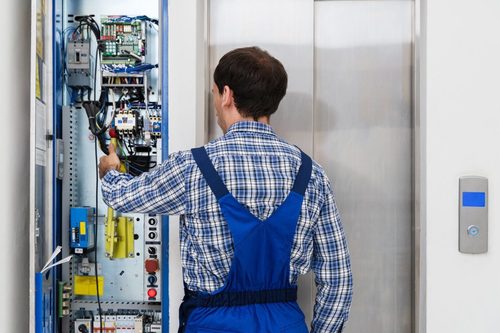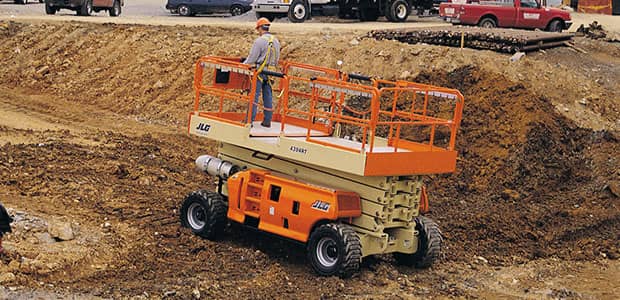System Lift Capacities Explained: Why They Issue for Lift Servicing
System Lift Capacities Explained: Why They Issue for Lift Servicing
Blog Article
Professional Tips for Ensuring Safety And Security Throughout Comprehensive Lift Fixing Treatments
In the world of detailed lift repair work procedures, safety stands as a vital concern that demands precise interest to information and adherence to established methods. As the complicated interaction of equipment and human treatment unravels, a strategic strategy to safety and security comes to be the cornerstone for successful fixing operations.
Security Gear Requirements
The safety gear requirements for lift repair treatments are important to make certain the health of maintenance workers. Correct safety and security gear not only safeguards workers from prospective hazards however additionally enhances efficiency and accuracy throughout repair service tasks. When working with lifts, maintenance personnel have to stick to strict security procedures by putting on ideal gear such as construction hats, safety and security goggles, gloves, steel-toed boots, and high-visibility vests. These products are created to give defense against head injuries, eye damage, hand injuries, foot injuries, and enhance visibility in the work atmosphere to avoid crashes.
Security goggles secure the eyes from debris, chemicals, or triggers that may be generated throughout repair job. By strictly sticking to safety equipment requirements, upkeep personnel can minimize dangers and job effectively to keep and repair lifts.

Devices Assessment List
To make certain the upkeep employees's safety and security and the correct performance of lifts, a comprehensive equipment inspection list is important prior to commencing any repair procedures. lift servicing companies. This checklist needs to consist of a detailed exam of all parts such as cords, pulley-blocks, electrical systems, and safety devices. It is critical to check for any type of signs of damage, corrosion, or damage that may jeopardize the lift's architectural honesty or functional performance
Along with mechanical parts, the inspection list ought to include safety and security features like emergency situation brakes, limit buttons, and overload sensors. These security systems play an essential duty in ensuring and protecting against mishaps customer security during lift procedure.
Additionally, validating the calibration of control systems, verifying appropriate air flow and lighting within the lift shaft, and examining for any obstructions or particles are important actions in the examination process. Routine upkeep and adherence to the equipment evaluation list not just enhance security methods yet also prolong the life-span of the lift system, reducing the possibility of unforeseen failings or pricey fixings.
Hazard Identification Methods
Making use of methodical analysis approaches, danger identification methods are utilized to pinpoint possible dangers within lift repair treatments. One typical technique is the Task Safety Evaluation (JSA), where each step of the repair procedure is very carefully evaluated to recognize prospective hazards and establish the finest safety and security procedures to mitigate them.

Emergency Response Readiness
With a concentrate on ensuring swift and reliable reaction to unforeseen scenarios, emergency feedback readiness is a vital aspect of preserving safety throughout lift repair work treatments. Prioritizing emergency situation preparedness entails establishing clear interaction channels, marking particular duties and obligations, and conducting routine drills to examination reaction times and methods.
Secret components of emergency feedback preparedness include having conveniently available emergency treatment sets, fire extinguishers, and emergency situation get in touch with details prominently showed. It is essential to educate all employees included in lift fixing procedures on emergency reaction procedures, consisting of how to safely leave the location in case of a fire or other emergency situations.
Furthermore, establishing a thorough emergency reaction strategy details to raise repair situations can assist minimize prospective risks and make sure a punctual and collaborated action in case of an incident. Frequently examining and upgrading this strategy based upon lessons gained from past drills or occurrences is vital to continuously improve safety measures during lift repair procedures.
Ongoing Safety Training
Continuous education and training in safety protocols is a fundamental component of ensuring the recurring safety and security of employees during lift repair work procedures. Ongoing security training plays a critical role in keeping workers notified regarding the current safety standards, methods, and ideal methods in the industry (lift repair). By offering normal training sessions, employees can remain current on possible risks, safe job procedures, and emergency methods certain to lift repair settings
Normal security training additionally assists strengthen the relevance of following safety and security standards and treatments at all times. It infuses a safety-conscious attitude among employees, promoting a society of security within the workplace. Furthermore, ongoing training enables workers to freshen their knowledge and abilities, enhancing their readiness to handle any type of unforeseen security challenges that might arise during lift fixing procedures.
To ensure the efficiency of ongoing security training, it is necessary to tailor the web content to the specific dangers and needs connected with lift repair service procedures - platform lift dimensions. Employers need to frequently assess training demands, provide chances for hands-on technique, and encourage open communication concerning safety and security problems among all workers associated with lift repair service procedures
Conclusion
Finally, making certain safety during extensive lift repair service treatments is crucial for preventing crashes and injuries. By complying with security gear requirements, carrying out equipment inspections, recognizing threats, planning for emergencies, and providing recurring safety and security training, workers can reduce threats and create a safe work atmosphere. Prioritizing precaution and staying alert throughout the repair procedure will help secure both workers and the tools being serviced.
When working on lifts, upkeep personnel have to adhere to rigorous security methods by using ideal gear such as difficult hats, safety goggles, handwear covers, steel-toed boots, and high-visibility vests. One typical technique is the Task Safety And Security Analysis (JSA), where each action of the lift repair repair process is thoroughly evaluated to recognize potential hazards and establish the ideal safety and security measures to alleviate them.Continual education and training in safety protocols is an essential component of making certain the continuous safety and security of workers during lift repair service treatments.Routine safety and security training also aids reinforce the significance of complying with safety guidelines and treatments at all times. By adhering to safety equipment needs, performing tools evaluations, identifying dangers, preparing for emergencies, and providing continuous security training, workers can decrease risks and develop a risk-free job environment.
Report this page